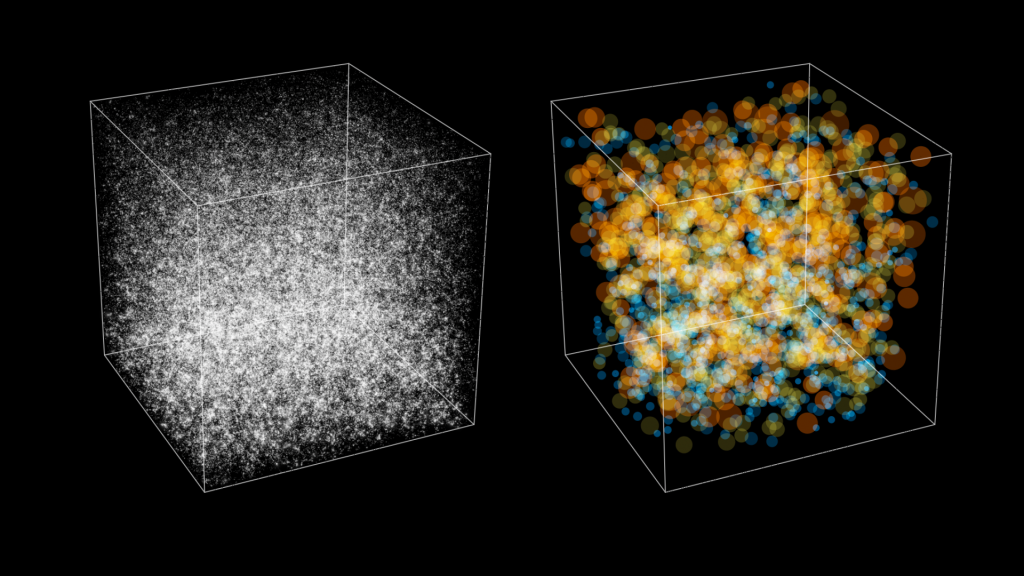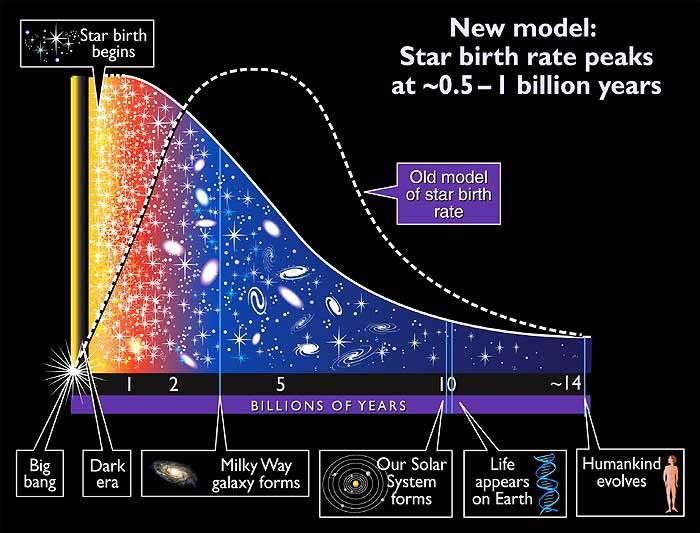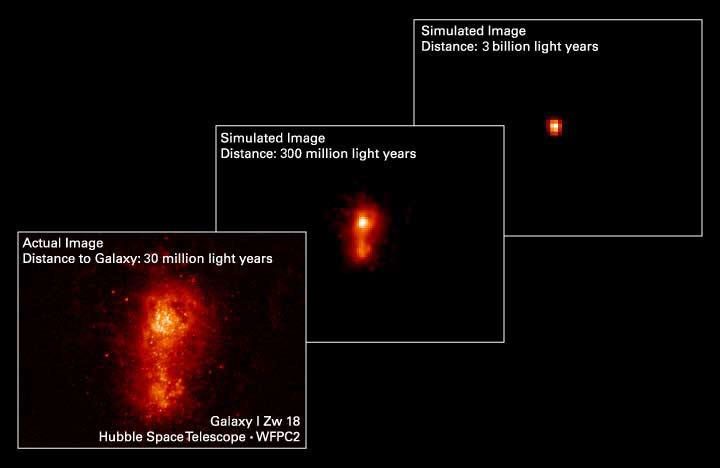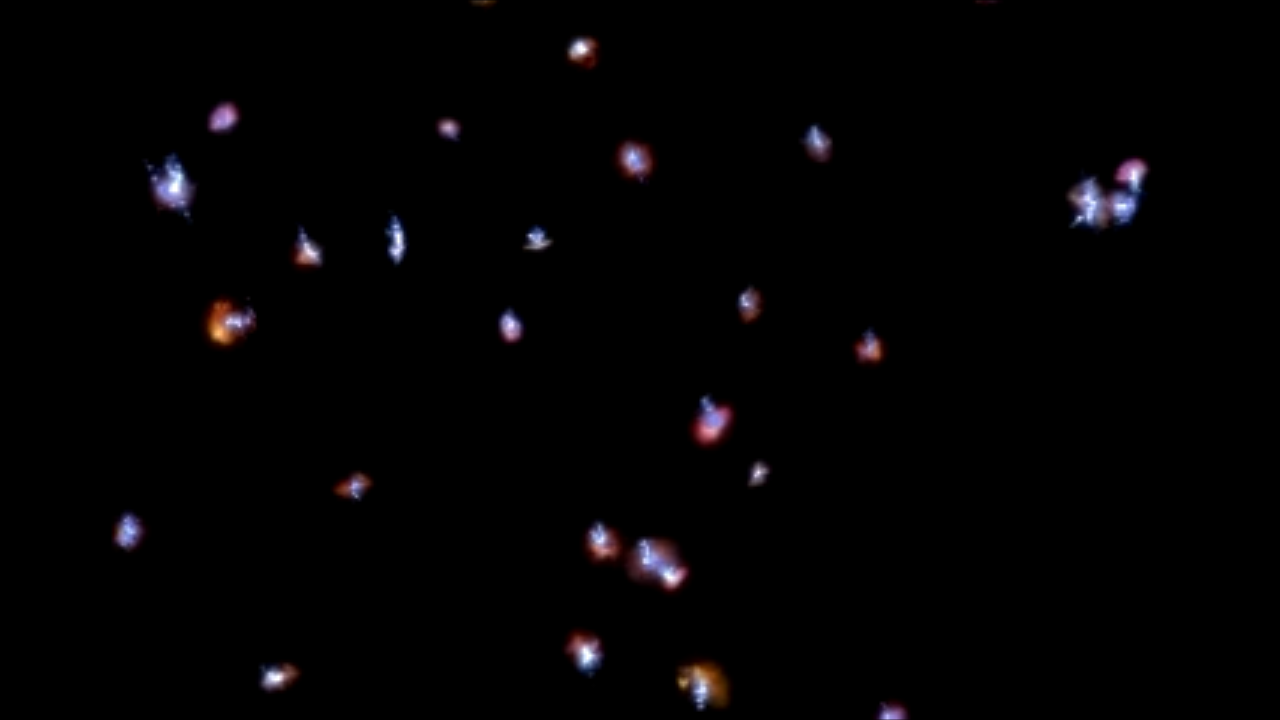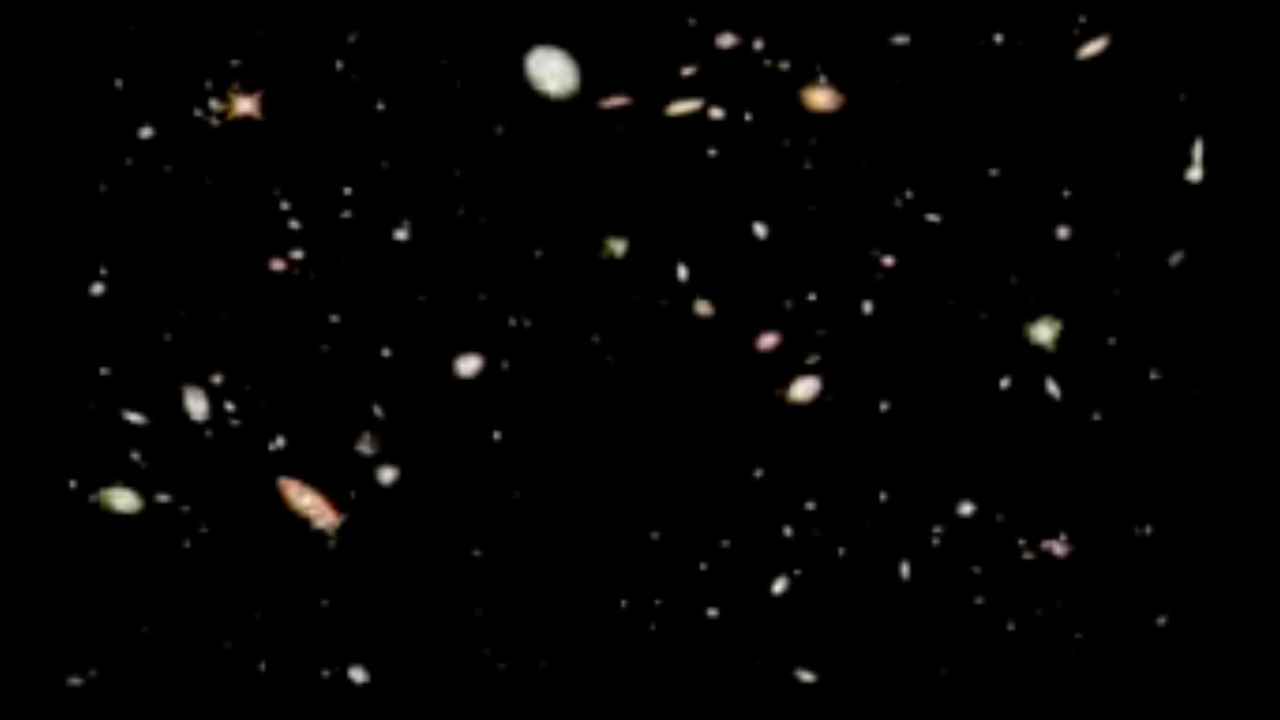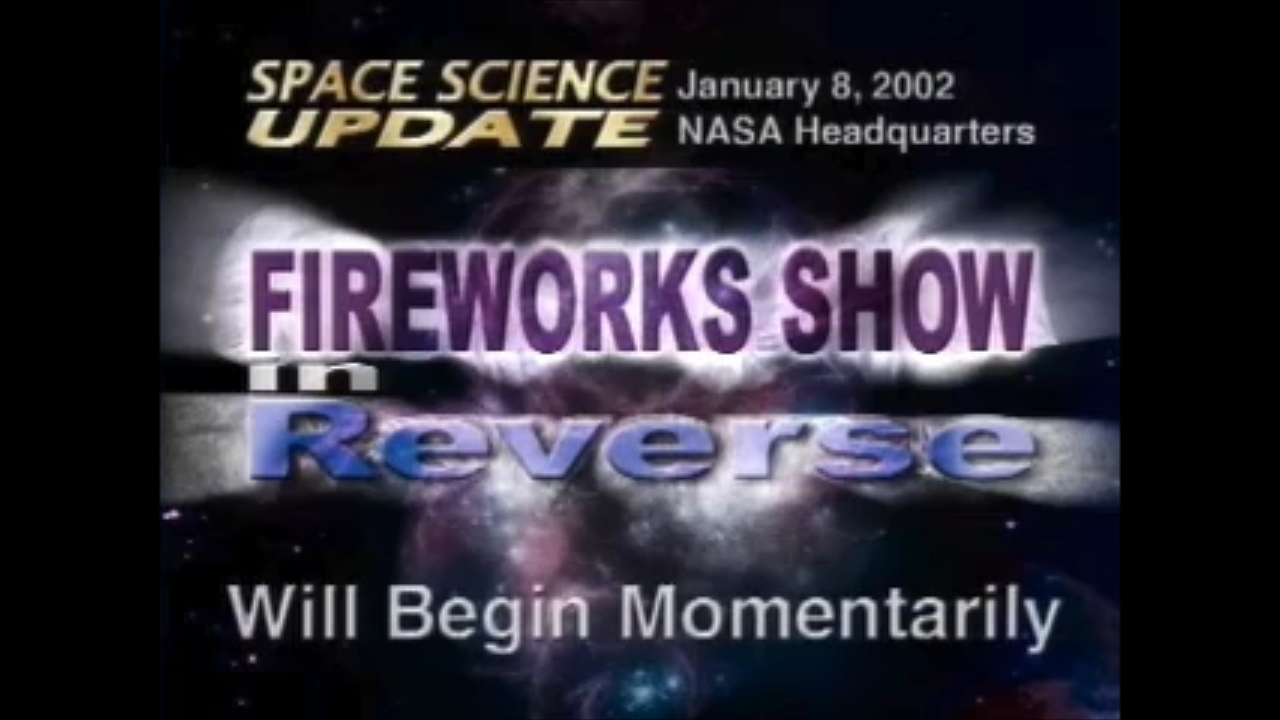The deepest views of the cosmos from NASA's Hubble Space Telescope are yielding clues that the very first stars may have burst into the universe as brilliantly and spectacularly as a fireworks finale - except, in this case, the finale came first - long before Earth, our Sun and the Milky Way Galaxy formed.
If this interpretation is correct, it offers a tantalizing possibility that astronomers may behold this stellar blaze of glory when they use NASA's Next Generation Space Telescope and other future space telescopes to probe even farther into the very early universe.
Studies of Hubble's deepest views of the heavens by Kenneth M. Lanzetta of the State University of New York (SUNY) at Stony Brook, and colleagues, lead to the preliminary conclusion that the universe made a significant portion of its stars in a torrential firestorm of star birth which abruptly lit up the pitch-dark heavens just a few hundred million years after the big bang. Though stars continue to be born today in galaxies, the star birth rate could be a trickle compared to the predicted gusher of stars in those opulent early years.
This new idea of a continually escalating rate of star birth the farther Hubble looks back in time offers a dramatic revision of previous Hubble Deep Field studies that proposed that the star birth rate in the early universe ramped up to a "baby boom" about halfway back to the beginning of the universe.
Lanzetta bases his conclusion on a new analysis of galaxies in the Hubble deep fields taken near the north and south celestial poles (in 1995 and 1998 respectively). He reports in an upcoming issue of the Astrophysical Journal that the farthest objects in the deep fields are only the "tip of the iceberg" of an effervescent period of star birth that is unlike anything the universe will ever see again. Lanzetta concludes that 90 percent of the light from the early universe is missing in the Hubble deep fields. "The previous census of the deep fields missed most of the ultraviolet light in the universe; most of it is invisible," he says.
Based on an analysis of galaxy colors, Lanzetta concludes that the farthest objects in the deep fields must be extremely intense, unexpectedly bright knots of blue-white, hot newborn stars embedded in primordial galaxies that are too faint to be seen even by Hubble's far vision. It's like seeing only the lights on a distant Christmas tree and inferring the presence of the whole tree.
The missing light is deduced much as one might deduce the attendance at a neighbor's party by peering over a tall fence. If all one could see were people over six feet tall, one would conclude that there were many more people at the party that couldn't be seen. This conclusion would be based on an assumption about the average heights of people.
Likewise, Lanzetta's analysis is based on carefully extrapolating back into time from the conditions in the present universe. Because such far extrapolations are built on certain assumptions, this conclusion will require further analysis and observation.
Lanzetta next plans to use Hubble's Advanced Camera for Surveys (to be installed in early 2002) to look even deeper into the universe to try to directly verify some portion of the missing light. He will also look for very distant supernovae as an alternate measure of star formation. "Because they are point sources of light, supernovae are not subject to the same cosmological brightness dimming effects like galaxies (which are extended sources of light)," says Lanzetta.
The universe could go on making stars for trillions of years to come, before all the hydrogen is used up, or is too diffuse to coalesce. But the universe will never again resemble the star-studded tapestry that brought light back to the darkness.
TECHNICAL FACTS ABOUT THIS RELEASE:Principal Astronomers: K. Lanzetta (SUNY Stony Brook), H.-W. Chen (Carnigie Observatories), A. Fernandez-Soto (Osservatorio Astronomico di Brera, Italy), S. Pascarelle and N. Yahata (SUNY Stony Brook)
About the Hubble Deep Field (HDF)
R.A.: 12h 36m 49.5s
Dec.: +62° 12' 58.0"
Constellation: Ursa Major
Exposure Dates: December 1995 to present
Filters: F110W, F160W, F222M, F300W, F450W, F606W, F814W
About the Hubble Deep Field South (HDF-S)
R.A:. 22h 32m 56.0s
Dec.: -60° 33' 00.0"
Constellation: Tucana
Exposure Dates: December 1995 to present
Filters: F110W, F160W, F222M, F300W, F450W, F606W, F814W
BACKGROUND INFORMATION: THE EARLY COSMOS – OUT OF THE DARKNESS
Imagine a night sky without the twinkling light from stars and galaxies piercing the darkness. Astronomers believe that this was the bleak picture of the universe for at least a hundred million years after the "big bang," a tremendous explosion that produced time, space, and matter about 14 billion years ago.
Although no stars and galaxies existed just after the big bang, the young cosmos was anything but dull. It was humming with activity.
The big-bang explosion spewed intense radiation and energy. In the beginning, physical conditions were so extreme that matter as we know it today did not exist. When the universe was about one millionth of a second old, the temperatures and densities dropped enough for protons and neutrons – the building blocks of atoms – to form. Within the next few minutes, the nuclei of light elements, such as hydrogen, helium, lithium, and boron, were created. When the universe cooled to about 5,400 degrees Fahrenheit (3,000 degrees Centigrade), atomic nuclei could finally capture electrons to form atoms. By 300,000 years, the universe was made up mostly of clouds of hydrogen and helium atoms.
As the universe expanded and cooled, some regions of space amassed slightly higher densities of hydrogen. As millions of years passed, the slight differences grew large, as dense areas drew in material because they had more gravity. Researchers have dubbed this period of coalescing the "dark ages."
The dawn of light, called the "cosmic renaissance," began as hydrogen collapsed into small areas, eventually reaching the point at which the effect of gravity became great enough to trigger nuclear fusion reactions and form the first stars. These first-generation stars were probably born at least 100 million years after the big bang.
Today, astronomers who study distant galaxies are beginning to probe the cosmic renaissance. Roughly a thousand galaxies have been identified whose light left them when the universe was about one billion years old. At that epoch stars were forming at a rate about 10 times higher than in the present-day universe. Stars in that early epoch were making heavier elements, such as carbon and oxygen, which mixed with pristine gas from the big bang to create successive generations of stars.
At greater distances (looking farther back in time) our view becomes murkier; the number of known galaxies is smaller and their distances are more uncertain. Using the deepest images from the largest ground- and space-based telescopes, astronomers are just now beginning to see into the era when the first stars may have formed.













